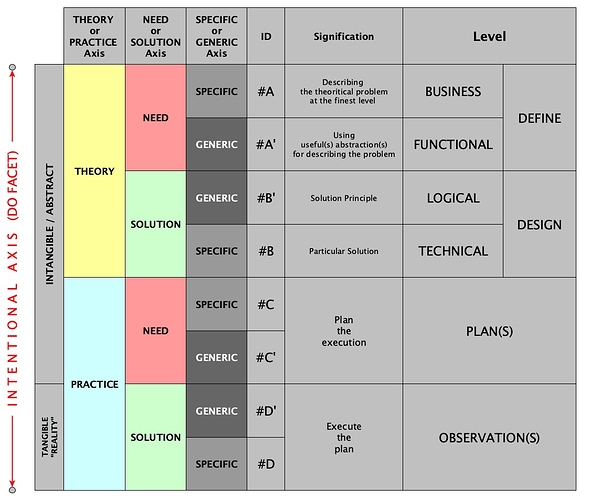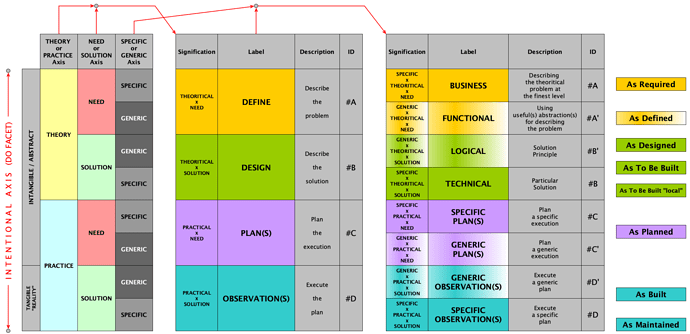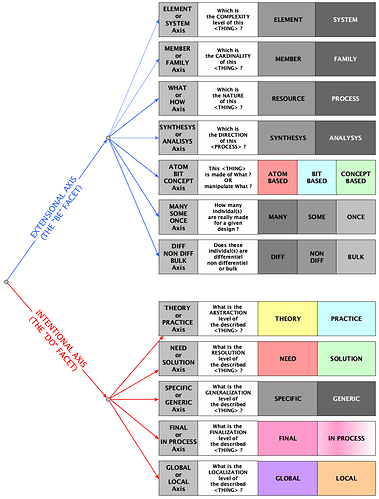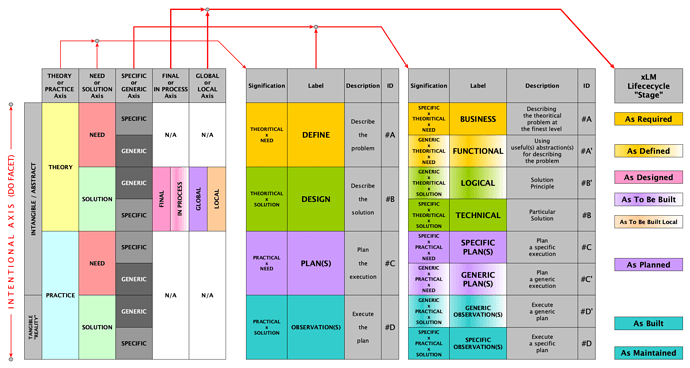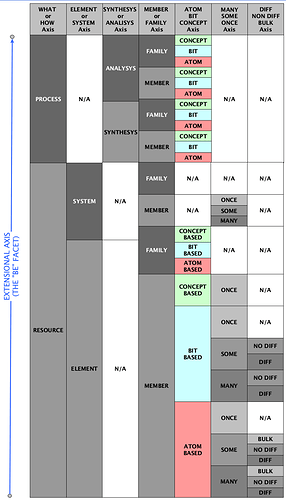The 3 “Intentional” Axis combined togheter could explain the signification of “Levels” used in the context of Enterprise Architecture / Software Developement …
Some product “types” (corresponding in fact at lifecycle “stages”) can NOT be explained by this schema !
Indeed, at the Design level (ID = #B) the product types : As Designed / As To Be Built / As To Be Built “local” need another (or perhaps 2) Axis to be fully explained …
One Axis could be “FINAL” vs “IN PROCESS” in order to explain “As Designed” vs “As To Be Built”
The other Axis could be “GLOBAL” vs “LOCAL” in order to explain “As To Be Built” vs “As To Be Built Local”
So, the xML ( Lifecycle Management) problem require now a « 12 dimensions » - matrix solution with :
• 5 Intentional Axis
• 7 Extensional Axis
=> Size of the theoretical matrix : 2x2x2x2x2 X 2x2x2x2x3x3x3 = 32 X 432 = 13824 cells
(Rq : Some “cells” of the matrix are N/A)
The intentional Axis combinations can explain :
“Concerns” of most common Enterprise Architecture Framework,
but also
“Stages” of Lifecycle
The global context is about the « PLM » (Product Lifecycle Management) knowledge domain
=> defining, designing, developing, producing & maintaining products
(In other words : « All about the Product from the cradle to the coffin »)
The local context is about the different Product « types » (which are in fact lifecycle « stages »)
For exemple we encountered in this knowledge domain the following « stages » :
As Required Product
As Defined Product
As Designed Product
As To Be Built Product
…
As Built Product
The goal of this schema is to provide a « deep explanation » of each « stage »
=> i.e. explaining which combination of more simplest concepts are using in order to give meaning to a given « stage »
For example the « stage » named « As Required Product » take its meaning thanks to the following combination : Theory x Need x Specific

